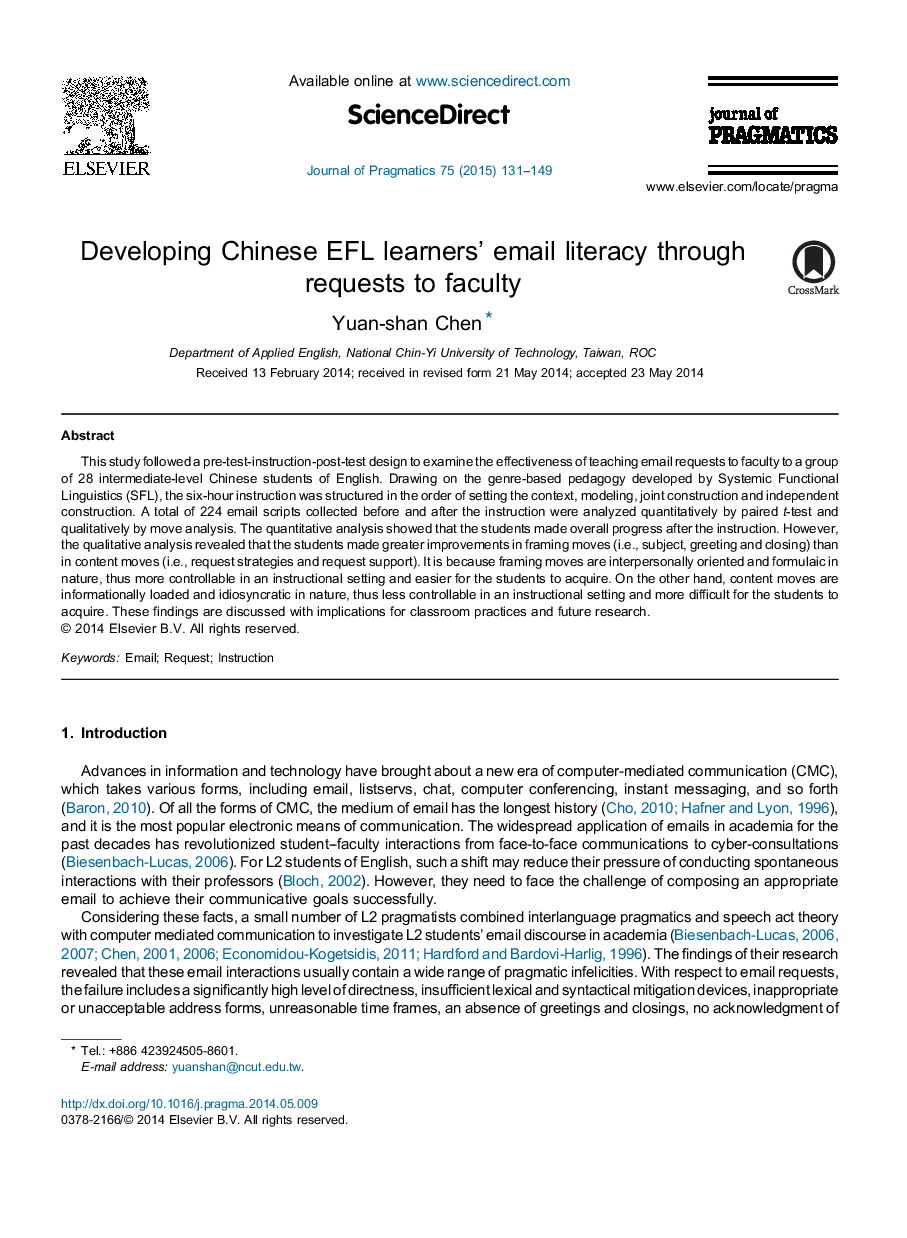| Article ID | Journal | Published Year | Pages | File Type |
|---|---|---|---|---|
| 932679 | Journal of Pragmatics | 2015 | 19 Pages |
•The learners made progress in the email productions after the instruction.•The learners made progress in the confidence level after the instruction.•The learners made more progress in the framing moves after the instruction.•The learners made less progress in the content moves after the instruction.
This study followed a pre-test-instruction-post-test design to examine the effectiveness of teaching email requests to faculty to a group of 28 intermediate-level Chinese students of English. Drawing on the genre-based pedagogy developed by Systemic Functional Linguistics (SFL), the six-hour instruction was structured in the order of setting the context, modeling, joint construction and independent construction. A total of 224 email scripts collected before and after the instruction were analyzed quantitatively by paired t-test and qualitatively by move analysis. The quantitative analysis showed that the students made overall progress after the instruction. However, the qualitative analysis revealed that the students made greater improvements in framing moves (i.e., subject, greeting and closing) than in content moves (i.e., request strategies and request support). It is because framing moves are interpersonally oriented and formulaic in nature, thus more controllable in an instructional setting and easier for the students to acquire. On the other hand, content moves are informationally loaded and idiosyncratic in nature, thus less controllable in an instructional setting and more difficult for the students to acquire. These findings are discussed with implications for classroom practices and future research.
